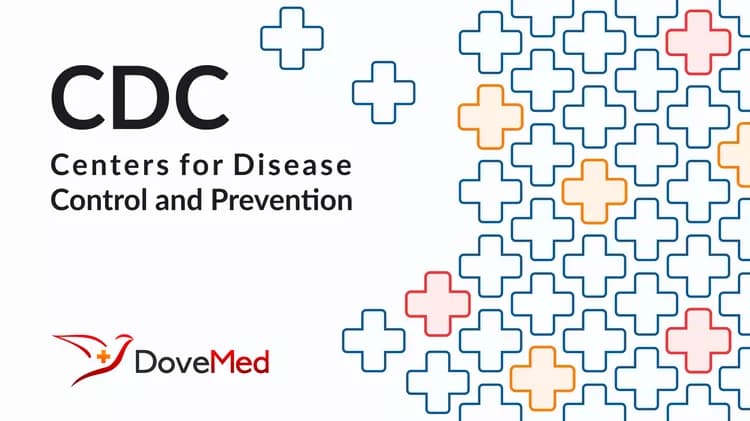
Smoking During Pregnancy--Rates Drop Steadily in the 1990's, But Among Teen Mothers Progress Has Stalled
Smoking During Pregnancy--Rates Drop Steadily in the 1990's, But Among Teen Mothers Progress Has Stalled
The rate of smoking during pregnancy dropped 33 percent between 1990 and 1999, so that in 1999 just over 12 percent of all women reported smoking during their pregnancies, according to a new report from the Centers for Disease Control and Prevention. The greatest success in reducing smoking was for women in their late twenties and early thirties, where there was over a 40 percent drop since 1990.
"Mothers are far more likely to have healthier babies when they make the smart decision not to smoke during pregnancy," HHS Secretary Tommy G. Thompson said. "While the overall trend is encouraging, it's clear that we must do more to ensure young women understand smoking's real health risks for them and for their children."
Teenagers were more likely than women of any other age to smoke while pregnant. After experiencing a dramatic 20-percent decline in the first part of the decade, smoking rates among pregnant teenagers–unlike women of all other ages--increased by 5 percent from 1994 to 1999. The highest rate in 1999 (19 percent) was for women 18-19 years of age.
"More women are making the right choice and are not smoking during pregnancy, yet too many women–almost a half million in 1999–smoked while pregnant," said Dr. Jeffrey P. Koplan, CDC Director. "The best advice we can give all women is to begin their pregnancies as healthy non-smokers," he said.
"Smoking During Pregnancy in the 1990s," from CDC’s National Center for Health Statistics, presents an analysis of the current patterns and trends in smoking by age, race and ethnic origin on a national basis as well as a state-by-state breakdown of smoking rates for each year and the percent change from 1990 to 1999. CDC tracks smoking rates among pregnant women because of the serious consequences to their babies, such as low birthweight, growth retardation, and infant mortality. Other highlights of the report show:
Women of all race and ethnic groups were less likely to smoke during pregnancy in 1999 than they were in 1990. Of all groups, American Indian women still have the highest rate of smoking during pregnancy (20 percent) and had the smallest reduction in that rate. Smoking rates are still high for non-Hispanic white mothers (16 percent) whose rate dropped by 25 percent.
Rates were lower for Hispanic and non-Hispanic black women during pregnancy and those rates were further reduced by about 45 percent during the 1990s. Already the lowest, smoking rates during pregnancy for Asian and Pacific Islander women were cut by 47 percent, to a smoking rate of 3 percent by 1999.
Non-Hispanic white teens had the highest rate overall at 30 percent and represent one in seven of all women who smoked during pregnancy.
There is great variation in smoking rates within racial and ethnic groups as well. Puerto Rican mothers were more likely to smoke during pregnancy (11 percent) than any other Hispanic group. Hawaiian mothers have higher rates (15 percent) than any other Asian and Pacific Islander women.
The percent of mothers who smoked during pregnancy in 1999 ranged from about 2 percent for those with four or more years of college to 29 percent for those who did not complete high school. Nearly one-half of non-Hispanic white women with 9-11 years of education smoked during pregnancy.
The report includes data for most States, the District of Columbia and New York City, all of which reported a drop in smoking rates from 1990 to 1999. The District of Columbia reported the largest single decline, a 77 percent drop, followed by Massachusetts and Arizona which cut their rates by more than 50 percent.
New York City, the District of Columbia, Texas, Arizona, and Hawaii have the lowest smoking during pregnancy rates--below 8 percent in 1999.
Women who smoked during pregnancy were more likely to have a low birthweight infant (12.1 percent) compared to women who did not smoke (7.2 percent) in 1999.
Data on smoking during pregnancy are based on information reported on birth certificates filed in state vital statistics offices and reported to CDC through the National Vital Statistics System. Currently the birth certificate obtains information on whether the mother smoked during pregnancy and the number of cigarettes per day. Because of the importance of this information, questions on tobacco use are being improved and expanded to provide more detailed information on smoking patterns immediately before and during pregnancy.
Copies of the report can be viewed or downloaded without charge from the CDC Home Page at http://www.cdc.gov/nchs. This report updates a comprehensive review of smoking and pregnancy presented in the 2001 Surgeon General’s Report on Women and Smoking, issued in March 2001. For more information on women and smoking go to http://www.cdc.gov/tobacco.
CDC protects people's health and safety by preventing and controlling diseases and injuries; enhances health decisions by providing credible information on critical health issues; and promotes healthy living through strong partnerships with local, national and international organizations.
Related Articles
Test Your Knowledge
Asked by users
Related Centers
Related Specialties
Related Physicians
Related Procedures
Related Resources
Join DoveHubs
and connect with fellow professionals

0 Comments
Please log in to post a comment.